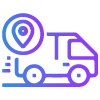Internet of Things or IoT, with its web of interconnected devices, is revolutionizing the way we engage, live and work. From wearables and autonomous vehicles to industrial supply chains and connected machines, IoT can provide tangible benefits everywhere – to people, governments, and organizations of all sizes.
However, not everyone is able to extract the full potential of IoT. There is a misconception that IoT is only for large companies with big teams and bigger budgets. But IoT can also be extremely effective in helping Small and Medium Enterprises (SMEs) turn their businesses into powerhouses of productivity.
Minimized redundancies, improved efficiencies
IoT can help to automate and streamline tedious, repetitive tasks such as delegation, scheduling, reporting etc. This allows resources to focus on activities that drive higher ROI. Additionally, by reducing jobs low on stimulation, SMEs can reduce the risk of employee churn, human error, and loss of productivity.
Less wastage, faster reaction times
Today, businesses continuity is paramount, and organizations are trying to minimize their downtime. This becomes even more critical for SMEs who are functioning in very competitive landscape. Leveraging sensors and machine data, IoT makes predictive maintenance a reality by maintaining vehicle and machinery health, identifying problems proactively and sending instant notifications to the stakeholders to take necessary actions. From remotely monitoring critical operations to boosting asset performance to providing critical information for informed decision making, IoT can help SMEs in multiple ways. Predictive maintenance allows supervisors to take proactive corrective actions preventing machine downtimes, accidents, and other damages
Deep consumer engagement, better marketing
Earlier SMEs used to depend on expensive research and inconsistent third-party data to generate customer insights. But today, with consumers adopting connected devices and wearables, SMEs now have direct access to unprecedented customer data.
By integrating and analyzing this data, SMEs can understand customers’ better, gain deeper insight into buying patterns and finally create real-time, bespoke marketing communication to help close the sale. The customer data, when used correctly, can drive innovation and help SMEs become agile and respond to market demands faster.
Real-time tracking, higher productivity
IoT offers a portfolio of practical approaches to improve logistics and supply chain management. IoT-enabled fleet management solutions can provide precise and real-time vehicle insights such as location, productivity and technical condition of every connected vehicle. By optimizing routes, workloads and delivery schedule, SMEs can get complete visibility into the timelines and cost of delivery. It can also strengthen a driver’s safety with fatigue detection systems and wearable applications.
Smart savings, greener planet
For SMEs, small cost savings can make a huge difference. Smart metering and lighting solutions can help to save on utilities by streamlining energy consumption and allowing remote monitoring. Sensors can track space occupancy and automatically trigger a switch off or dimming of the lights and temperature controls to lower energy consumption. SME can also manage the idle time for office equipment and machines, automatically turning them off when not in use.
IOT: How can SMEs start their Digital Transformation journey?
IoT holds the power to bring together all the digital technologies for SMEs and transform their businesses. However, they must not treat it as a panacea for all their problems. This is so because IoT inherently has no value. The value of IoT, much like software, lies in the tangible benefits it can provide to the business. Here are some steps to kick-start the transformation journey.
Step 1: Identify the areas of improvement and the business problems you are trying to solve – customer retention, enhanced process efficiency, or general organization-wide automation.
Step 2: Manage the overwhelming amount of data that is generated in huge variety, volumes, and at great speed. Storing and managing this data is very critical and sometimes can be very challenging for an SME.
Step 3: Recognize the right IoT technologies and detail out how they fit into overall IoT and business strategy.
IoT projects are complex and slow to get off the ground. While large multinationals can afford big consulting companies to help craft a business plan, it is not feasible for many SMEs as they tend to operate on much leaner models. Therefore, it is imperative for an SME to find the right technology partner that understands its business, pain-points, areas of improvement, goals, and most importantly, its budget, to help design a strategy bespoke to its unique strengths and weaknesses.
By adopting IoT for its digital transformation, an SME can open doors to huge opportunities and turn its vision into reality.










Leave a Reply